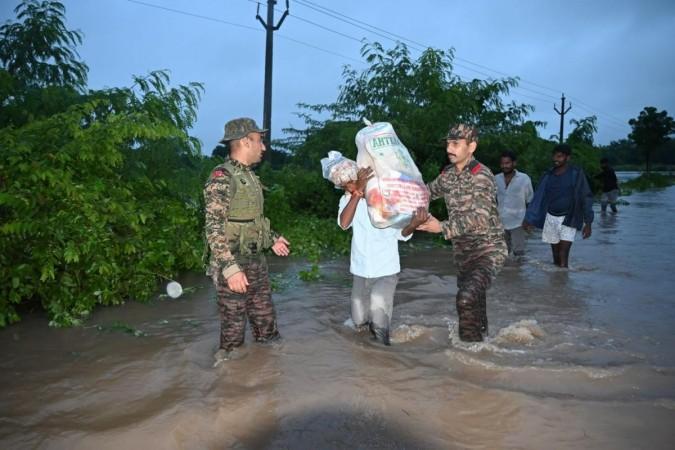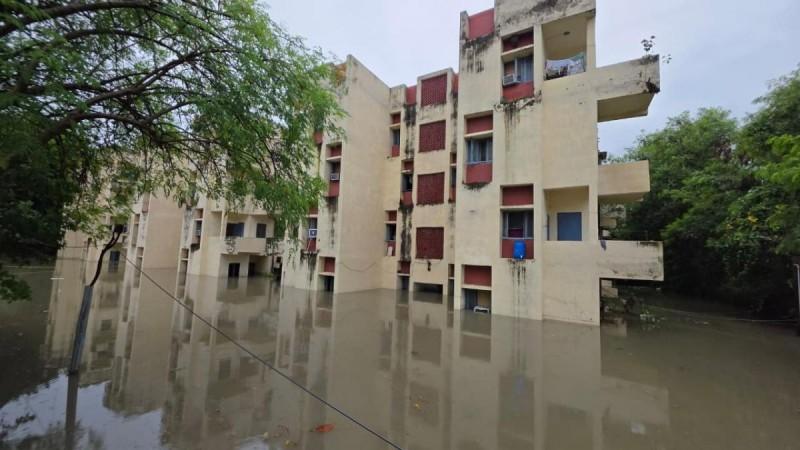
In a remarkable display of humanitarian aid, the Indian Army has initiated extensive operations to rescue and provide relief to those affected by severe flooding in northern India. The operations, which commenced on Thursday, involve the deployment of 12 helicopters to evacuate and deliver medical aid and food to people stranded in flood-ravaged areas.
This initiative is in response to requests from the civil administration in Jammu, Himachal Pradesh, and Punjab. As of now, 1,211 civilians have been successfully evacuated to safety, including 11 Punjab government officials stranded at the Madhopur Barrage and 180 personnel from the Punjab Military Forces (PMF).
The operations have been executed with remarkable speed and efficiency, utilizing all available resources to ensure the safety and well-being of the affected civilian population. The Indian Army has emphasized that these actions are being carried out in close coordination with local state administrations to maximize the effectiveness of the relief efforts.
The swift and decisive actions taken by the Army's aviation and ground forces have brought much-needed relief to families affected by the floods in various regions, including Jammu's Mamun, Pathankot's Samba, Kachle and Sujanpur, Gurdaspur's Makaura Pattan and Adalatgarh, as well as the Amritsar and Ferozepur sectors.
To bolster the relief efforts, a total of 28 Army columns, which include medical teams and communication resources, have been activated. These columns are providing immediate ground support, assisting with evacuations, restoring connectivity, and delivering medical aid to displaced families. The helicopter operations have been particularly challenging, involving complex winching and hovering maneuvers to rescue civilians stranded on rooftops and in flooded villages. The fleet includes three Advanced Light Helicopters (ALH) and nine Cheetah helicopters, which have demonstrated high precision and bravery in their missions.

In addition to aerial rescues, boats and safety ropes are being used to transport stranded individuals to safer locations. The distribution of relief materials has also been prioritized, with nearly 2,300 kilograms of essential supplies, including food, water, and medicines, being delivered to isolated areas by both helicopters and ground teams. Medical teams are on the ground providing immediate aid to those injured or vulnerable due to the floods. In a significant engineering effort, a Bailey bridge has been constructed to restore connectivity in flood-damaged areas of Jammu, ensuring the continued movement of relief supplies and critical resources.
The operations are being conducted around the clock, in close collaboration with state administrations, underscoring the Army's commitment to service and sacrifice. Soldiers, engineers, medics, and aviators are working tirelessly to save lives and restore normalcy in the affected regions. In parallel, Union Communications Minister Jyotiraditya Scindia has taken decisive action to restore mobile connectivity in the flood-affected regions of Himachal Pradesh, Uttarakhand, and Jammu & Kashmir.
On Thursday, Scindia chaired a high-level review meeting to address the restoration of mobile services in these areas, with a particular focus on the severely impacted districts of Doda and Udhampur in Jammu.
The minister has directed urgent, war-footing measures to ensure that services are restored as quickly as possible. Efforts to restore connectivity have been progressing, with most fiber cuts already repaired. Ground teams are working diligently to rectify damaged fiber, create loops, and bring services back online. The Department of Telecommunications (DoT) has implemented Intra-Circle Roaming (ICR) in affected areas, allowing consumers to connect to alternative networks when their primary network is disrupted.

















